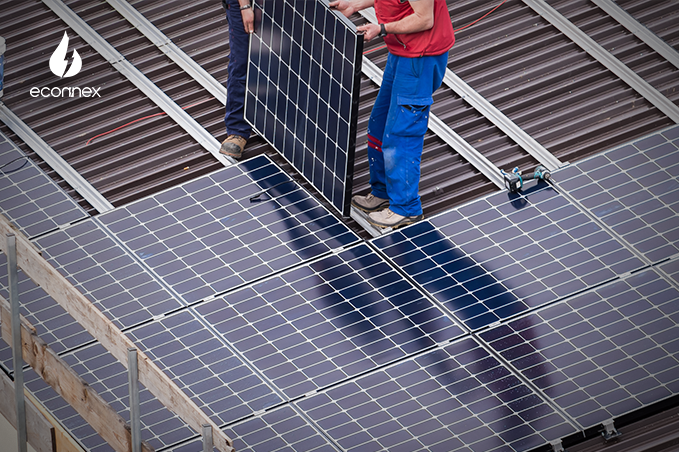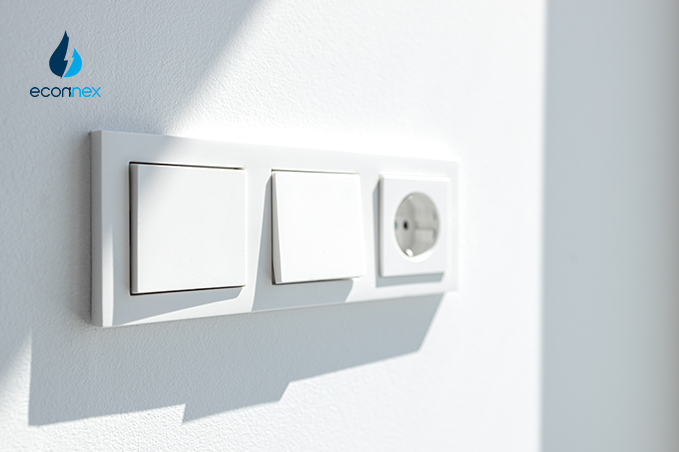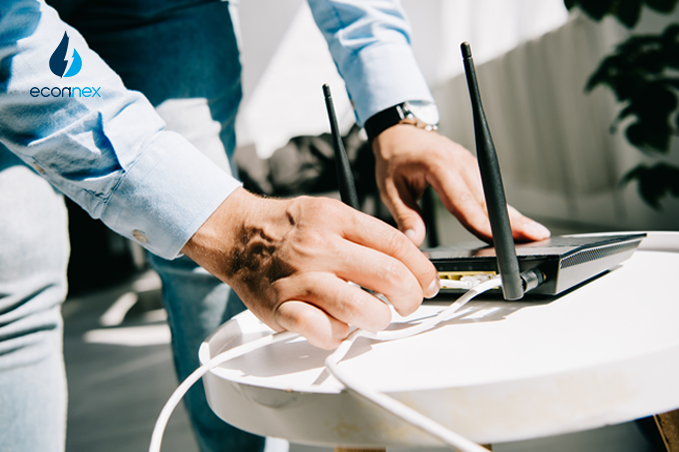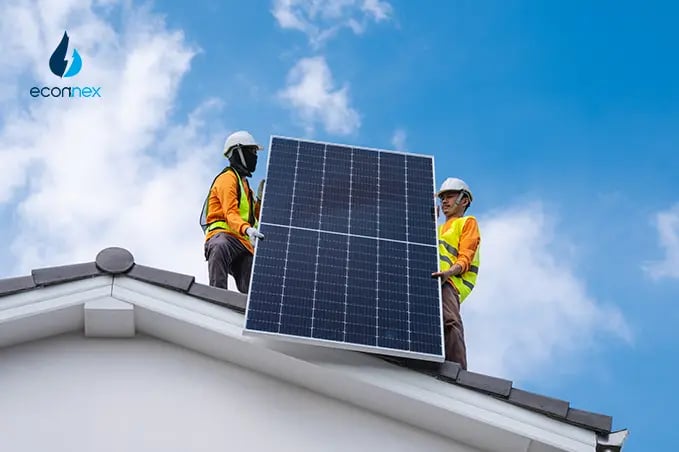Unlock the science of solar panels with Econnex. Dive into photovoltaic cells, inverters, and how solar can affect your electric bill in Australia.

Published on 06/03/2024
By William Walton
Solar Comparison
Solar power is front and centre in the minds of many environmentally conscious Australian consumers at the moment. It presents a potential opportunity to reduce reliance on grid power, decrease your carbon footprint and still maintain the performance of household electrical appliances. As renewable energy solutions continue to surge in popularity, there’s little doubt that the increase in solar uptake will continue. However, it can be confusing to wrap your head around how the photovoltaic cell technology actually works.
Fear not, as we’re here to help you unpack the ins and outs of solar panels, the technology that makes them work, and their potential utility in your energy setup. Let’s explore this essential renewable technology and what makes it so remarkable.
Solar Panel Systems in Australia typically have two or three main components:
Photovoltaic (PV) solar panels comprise many tiny photovoltaic cells, generally made of semiconductive silicone (‘doped’ with elements such as phosphorus and boron to create layers of varying charge). Some consumers believe these cells convert heat into electricity; however, that’s not the case. Instead, light is the basic fuel for PV panels, which use the impact of photons from the sun to create the movement of electrons or an electric field. This forms a direct current (DC), which eventually becomes the power that runs your appliances.
A conductive metal plate picks up the formed charge in the panel, transmitting the electricity into wires, leading to one or more inverters. The inverters convert the DC into an alternating current (AC), which most electrical appliances in the house require. There are a few different inverter types that you can use, depending on factors such as budget and energy requirements.
While they can be accompanied by a significant upfront cost can accompany them, there may also be some advantages in incorporating a battery into your solar setup. Batteries store any excess power generated by your solar panels over the course of the day to be available for your use at other times once the sun is down. They help you maximise the available energy from your PV Solar Panels, thereby maximising the reduction of your carbon footprint.
Check - How many kwh does a solar battery hold
Further, batteries can offer extra utility during times of emergency or blackout, as they all provide backup power protection. However, the amount of energy they can store is still ultimately finite. As such, it is recommended that consumers only operate essential appliances during a blackout, even if they have access to a solar power battery.
The term "photovoltaic" comes from the Greek word "phos," meaning light, and "volt," a unit of electrical force. French physicist Alexandre Edmond Becquerel first observed the photovoltaic effect in 1839. Fast forward to the 1950s, and the development of solar technology took an enormous step forward. Scientists at Bell Labs developed the first practical photovoltaic, or solar, cell, initiating a new era for producing renewable energy. Silicon became the material of choice due to its abundant availability and excellent semiconductor properties, and it remains so today.
The development of solar panel technology has wide-ranging implications for the average Australian consumer in terms of both their budget and environmental footprint, including:
While household solar panels are on the rise in Australia, there are also numerous other ways solar technology has been integrated into our lives, professions, and commutes. Solar energy is not confined to stationary structures such as buildings; it's also making its way into the realm of transportation. Solar-powered cars, boats, and even planes are becoming more feasible with every passing day, offering a glimpse into a future of sustainable mobility.
Further, the development of solar farms, with vast arrays of solar panels designed to produce renewable power for entire communities, could have a massive impact on the way that everyday Australians consume energy. Generally set up in areas with high sunlight exposure, such infrastructure is critical for moving the nation towards a more sustainable energy future.
Because a PV Solar Panel works by converting photons of light, not heat, it can still remain effective on cloudy days. It’s true that direct, unobstructed sunlight is the optimal condition for your solar system's performance. However, photons still reach your solar panels on days of more diffused light, such as cloudy conditions. That said, if there is an extended cloudy period, it may be worth considering limiting your use of high-consumption appliances, such as air conditioning, as your system may not perform to its maximum capacity.
Check - Measuring Solar Panel Electricity Generation
However, for those wondering, “Do solar panels work at night?” unfortunately, with a lack of photons from the sun, your system cannot produce any further energy after dark. Although you can use any excess power you’ve generated previously, depending on your set-up. This refers us back to batteries, which can extend your use of renewable energy well into the night (depending on battery capacity and your energy usage).
In Australia, there is a feed-in tariff (FiT), which is a fee given to you by the electricity retailer per unit of energy re-exported back to the grid. This offsets the cost of your grid energy consumption. Keep in mind that some jurisdictions across Australia have a limit regarding the amount of energy that a household can export back to the grid per day. This cap may affect the net return from FiTs over the lifespan of your solar system. How Much money Do solar panels save per year?
Now that we’ve discussed how solar panels work, let’s turn to the future. The outcomes will only improve with more research, investment, and human capital devoted to developing solar panel technology. Researchers are exploring new materials and designs that could significantly boost the energy yield per square foot of panels. Thin-film technology and bifacial panels are among the innovations that promise higher efficiencies.
Solar technology is also becoming more portable with the development of compact and manoeuvrable solar-powered chargers and generators. Further, many companies in this space offer integrated apps, allowing you to track your panels' performance, the power you’re producing and the amount you are re-exporting to the grid. More enterprises will undoubtedly enter this space, changing and improving how solar panels work in the Australian energy mix.
There will likely be more government policies and programs to encourage Australians to continue their uptake of solar technology and products. With the technology improving and more incentives being offered, the future looks bright for the further development of this essential renewable hardware.
We’re here to guide you when you’re ready to take that next step into renewable energy. Econnex intuitive platform finds solar packages available in your area from a range of providers on our panel. You can explore various features and sizes and submit your request online from one platform. It’s the smarter way for Australians to secure a green energy solution for their household.



